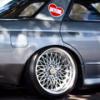Removing Hicas On R32 Gtr
Announcements
-
Similar Content
-
Latest Posts
-
Hello all I've been lurking around and reading many threads for quite some time, so I figured I may as well join in. I recently picked up a R33 GTR 3 V-SPEC RISERVATA that’s mostly stock. The car has always been a bit of a dream for me, and now I’m slowly starting to plan the next steps — nothing too crazy yet, but I’d like to keep it clean and responsive while pushing a bit more power.
-
By Murray_Calavera · Posted
You appreciate it could be pinging and not be audible from inside the cabin on the car right? -
Thanks for all the replies fellas. Gonna finish putting it back together and see how it handles the set up. If it starts pinging it’ll be parked.
-
Well, I can recommend the partial AV system translation CD I ordered from Car Audio Workshop in NZ. Whilst it didn't address the date issue, it has conveniently translated on-screen menu items into English, and now allows the GPS-received time to be offset in hours rather than minutes, so I can display Eastern Australian time accurately ( and bump it by another hour when daylight savings starts ).





Recommended Posts
Create an account or sign in to comment
You need to be a member in order to leave a comment
Create an account
Sign up for a new account in our community. It's easy!
Register a new accountSign in
Already have an account? Sign in here.
Sign In Now